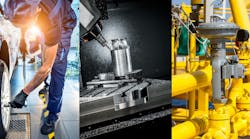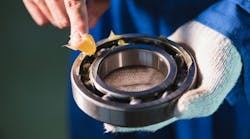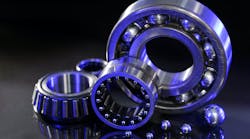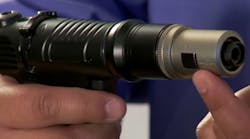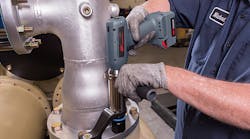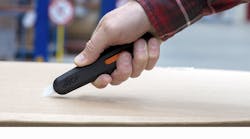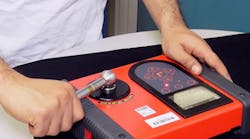Knowing your tool is the first step toward working in a safe, productive manner.
An air tool is a powerful instrument, capable of doing a great amount of work in a short time. But to be used safely and effectively, its operator must know and follow best practices for operation and maintenance. While there are a few things to remember, it mostly comes down to using and caring for your tool in an attentive, conscious way.
With that in mind, here’s a short guide to safely using and maintaining your pneumatic screwdriver.
How to Safely Use a Pneumatic Screwdriver
After you have located your tool and your workstation, follow these steps to get ready for usage:
- Select a bit
- Select your level of torque
- Attach the air hose
- Select forward or reverse motion, if this is an option on your tool
- Securely holding the tool, place your bit on the fastener
- Activate your tool by squeezing the lever or trigger, or by pushing your tool against the fastener
Let’s look at these steps in greater detail.
First, select your bit from among those rated for use on your specific tool. The bits which come with your tool are suitable for use, as are any others indicated in the instruction manual. Make sure your bit is of the appropriate size and configuration for your fastener.
If you are unsure if you have the correct bit, consult your work instructions or your supervisor. To insert a new bit, retract your bit collar, remove the old bit, place the new bit inside, and contract your bit collar.
Your torque selection mechanism will vary, depending on your tool. Some air screwdrivers allow one-touch torque selection, allowing operators to easily switch between settings. Others require manual adjustment.
You should receive instructions from your supervisor as to the amount of torque you’ll need for each fastener. If the amounts are expressed in different units than the settings on your tool, use a torque conversion calculator.
Only attach your air hose when you are ready to begin work. Attach the hose to the receptacle gently but securely, then open the airflow toggle to the hose. Your tool is now live. Select forward or reverse motion, which should be a noticeable switch on your tool. Place your bit on the fastener, activate your tool until torque shut-off occurs, then move to the next fastener.
Safety Guidelines for Pneumatic Screwdrivers
For your safety, you should always adhere to these general guidelines when using air screwdrivers or power tools of any kind:
- Wear appropriate personal protective equipment, such as safety goggles and gloves
- Avoid loose clothing or jewelry, which can get caught in your equipment
- Keep workplace floors clean and dry to prevent slips and falls
- Always use power tools fitted with guards and safety switches
- Understand how your tool works, including its motive power. Possible power sources include air, electricity, liquid fuel, compressed liquids (hydraulics), or powder
- Never carry your tool by the hose
- Remove your tool’s hose from its receptacle gently. Do not yank or tug it
- Keep your hose clear of heat, oil, and sharp edges. This can be aided by the use of an air hose reel tool balancer
- Disconnect your tool when not in use
- Disconnect your tool and remove or secure its power source (lockout, tag out) before servicing, cleaning, or changing accessories
- Keep bystanders away from your work area
- Secure work with a vise or clamp
- Use both hands to operate your tool
- Do not place your fingers on the start switch unless you are ready to begin
- Use good footing and maintain your balance
- Remove damaged tools from use and tag them “do not use” until they are cleared to return to service
By following proper procedures and observing the relevant safety guidelines, you can put your air screwdriver to work in a safe and productive manner.
Once you have finished with your work, you should close off your air supply, disconnect your tool’s air hose, and store the tool in a cool, dry, and secure location.
Ensuring Proper Air Quality
To keep your air tools working at peak performance, use a filter or regulator near your workstation to maintain a stable air pressure of 80-90 psi. This filter or regulator should also reduce humidity and debris in the ambient work environment. Consult the table below for ISO 8573-1 air quality standards for compressed air.
In addition, you should keep your air tool clean by purging new air hoses before use, storing your hose in a cool and dry area to prevent contamination, and inspecting your tools and filters regularly for issues. If your tool requires lubrication, the instruction manual will describe its needs.
How to Maintain a Pneumatic Screwdriver
Failing to properly maintain your equipment can lead to early breakdowns and hazardous situations. To keep your air tool working at an optimum level, certain maintenance actions should be performed at regular intervals, based on time or tool usage.
If a tool requires maintenance or is damaged, remove it from the operation and tag it until it is maintained or repaired.
Be sure to check your own tool’s instruction manual to identify any more specific requirements. Otherwise, the following maintenance guidelines will give you a good idea of how best to maintain your air tool:
Weekly Maintenance Actions:
- The operator inspects the condition of the air hoses and connections
- The operator inspects tool suspension and torque reaction components
- The operator ensures the lubricator is functioning properly (if applicable) and that the tool is appropriately lubricated
100,000 Cycle Maintenance Actions:
- Inspect housing, baseplate, socket, and socket bushings for tool, gear, and clutch components. Replace any worn or damaged components
- Lubricate gear head and angle headgears with Chevron Oil Co. Chevron SR-1 or equivalent
250,000 Cycle Maintenance Actions:
- Inspect the clutch and replace any worn components
- Inspect the valves and seals, then replace any worn components
- Disassemble the gear case, output, and motor. Check all components for wear, defects, or damage. Replace any worn, defective, or damaged parts, and replace the motor bearings
By paying careful attention to your tool and maintaining them at regular intervals, you can ensure a long, safe, productive work life.
If you are unsure how to maintain your tools yourself or at your operation, you can send them to a qualified service center for repair and maintenance.
If your operation requires tool certification, you will either need to certify your own service program or rely on an accredited service center.
Properly using and maintaining your air tools mostly requires a little time and common sense, with just a bit of specialized knowledge. With attentiveness and consideration on the part of the tool operator, you can ensure the safe usage of pneumatic screwdrivers.
If you follow guidelines and look after your tool, it will serve you productively for years to come.


